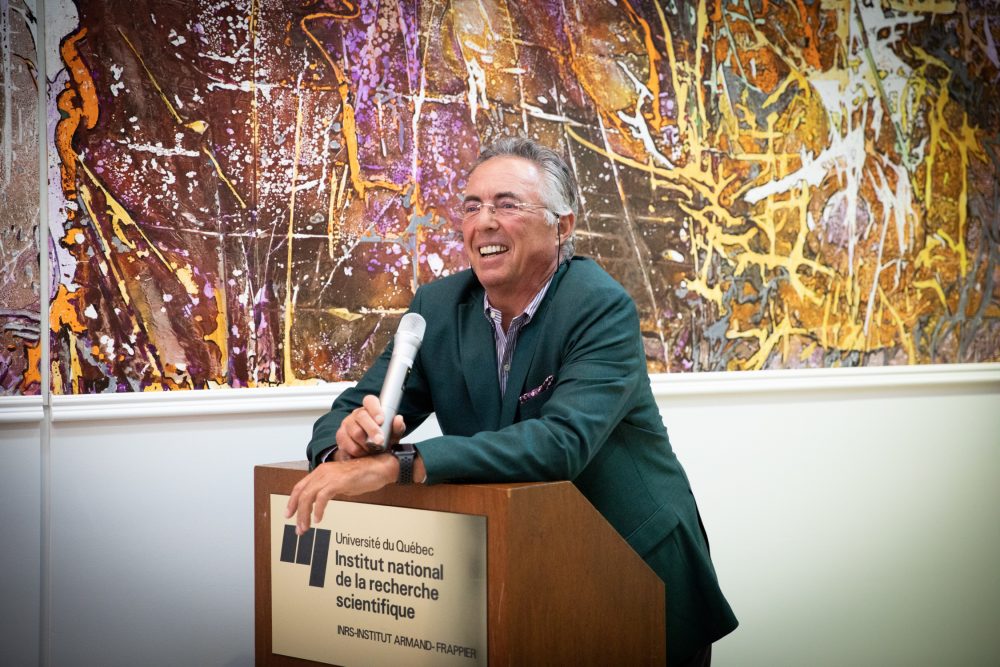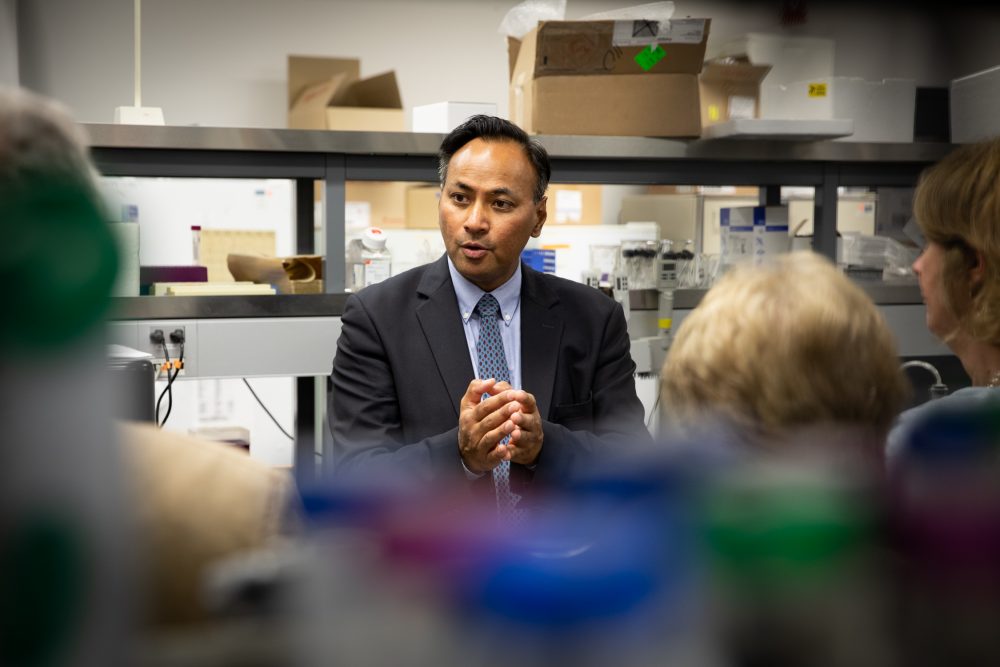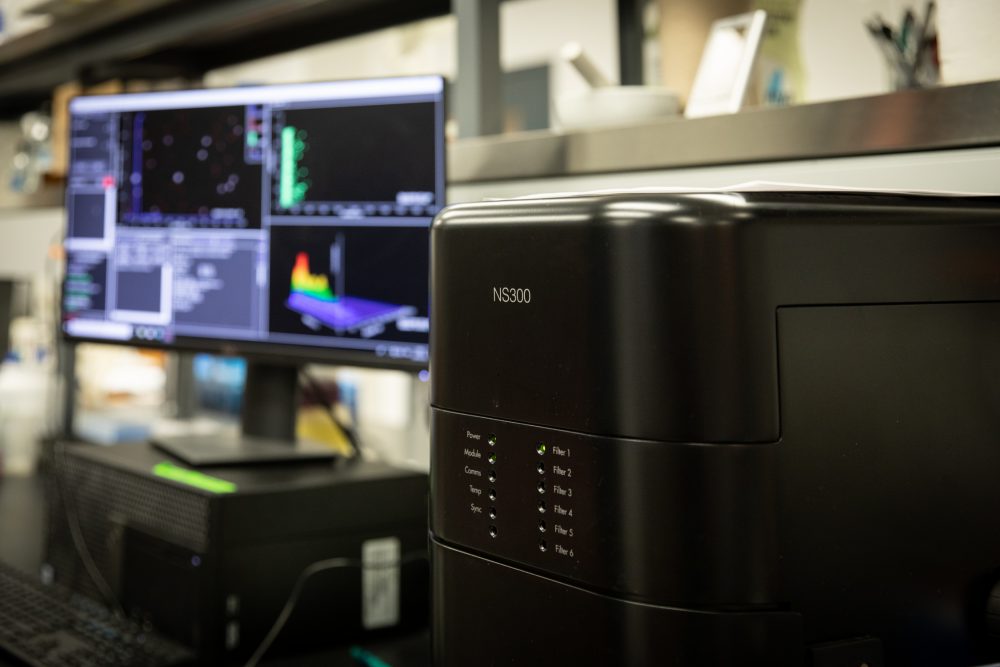On May 23rd, the Armand-Frappier Foundation highlighted the Charron Family’s sustained commitment to the cause of Alzheimer’s disease during an appreciation evening held in their honour. Their generous donation allowed Prof. Ramassamy’s laboratory to acquire a NanoSight 3000: a major asset for the advancement of research on this disease.

On May 23rd, M. André Charron spoke to us from the heart.
The Charron Family: involved and committed
As the Charron Family Trustee, Mr. André Charron was invited to address the professors and students of the Armand-Frappier Santé Biotechnologie Research Center during this evening. For several years now, their Family has been committed to the development of research on this disease that affected their father.
In addition to this recent donation for the purchase of new equipment, the Family created a Research Chair for Alzheimer’s disease in 2004, which ensures regular funds for the Laboratory to pursue its activity, and move forward in the development of research on this disease.
A Significant Support
During this evening, Prof. Charles Ramassamy invited the Charron Family as well as the other guests to visit the laboratory for research on Alzheimer’s disease, where he explained the contribution of the NanoSight 3000 in the development of research. The Nanosight 3000 consists of a computer and a laser scanner that allows one to see particles invisible to the naked eye. This technology makes it possible, among other things, to find blood markers for neurodegenerative diseases, in order to identify the disease early. In addition, nanotechnology allows further research on the encapsulation of existing drugs within nanoparticles, which would reduce the side effects in people and increase their brain capacity.
Considerable savings in both time and resources
Prof. Ramassamy states that before this acquisition, students who wished to use this technology for their research work had to travel to another INRS laboratory in Varennes. They had to first go to the Armand-Frappier Center to prepare their samples, then leave for the Montérégie, and then return to their laboratory to finish their work; it was an incredible amount of time lost in transport which imposed limitations on projects. This acquisition boosts productivity as the work of a whole day can now be done in only an hour!



